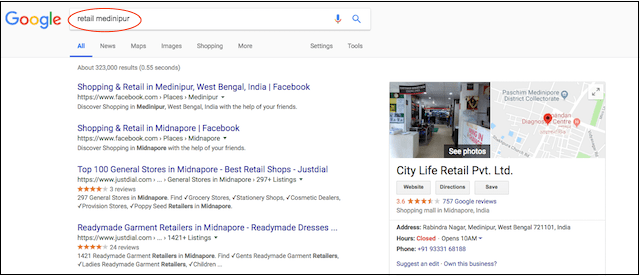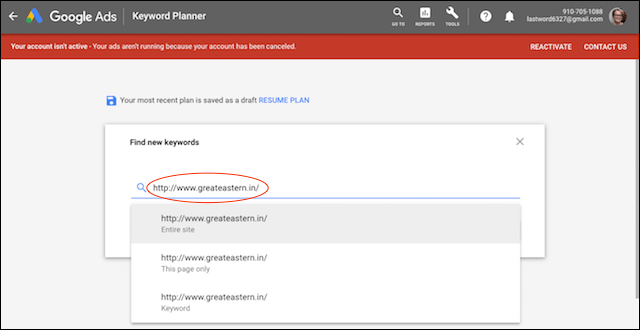Millions of entrepreneurs in India are selling products through their websites every day. But at some point, they realize the only way to grow is to bring still more people to their websites. The question is - how?
If you’re a small business owner in India trying to make your mark online, you may have heard people talk about SEO (Search Engine Optimization).
Nearly 70 percent of Indian respondents to a 2017 study said they search for information on the internet before making a purchase.
Much like people around the world, India consumers do online research before making a purchase. This provides a prime opportunity for business owners. Clearly, the first step in getting in front of those who are searching is to attract the attention of search engines.
In this guide, I’ll walk you through everything from how search engines work, why SEO matters especially in India, to keyword research, on-page and technical SEO, off-page / link building, local SEO, and content strategy tailored for Indian audiences.
What is SEO?
SEO (Search Engine Optimization) is the practice of improving your website so it appears higher in organic (non-paid) search results on Google and other search engines. When someone in India searches for “best tailor in Pune” or “affordable accounting services in Delhi”, SEO helps your pages show up near the top, so more of the right people find you, click through and become customers.
Since search engines are the primary way consumers find businesses, it is an effort well worth your time.
By bringing visitors to your website, SEO helps in lead generation and eventually sales and conversions.
At a simple level, SEO aligns your website with two things:
- What users want (their search intent - informational, local, or buying intent) and
- How search engines evaluate pages (relevance, quality, trust, and user experience).

By creating your business website, existing and potential customers will learn about the nature of your business, as well as products and services you provide. It is also used as a platform to generate leads or business from customers.
There are thousands of websites that sell products like yours, which means there are thousands of listings on search engine pages like the one above. However, people who search online rarely look beyond the first page of search engine results page (SERP).
So the objective of SEO is to get your site listed on the first page, which you can achieve through using specific organic SEO techniques to improve your website’s search ranking, which will eventually help you get traffic for free.
Related: Beginner’s SEO Guide
Why is SEO important for small businesses in India?
When people in India want something, be it a plumber, a boutique, or a course, they often search first. Studies show that 92% of users never click past page one of Google results. If your website isn’t visible for the right queries, you’re missing out.
Long-term value vs paid ads: SEO vs SEM
While paid advertising (Google Ads, Facebook ads) can generate immediate traffic, the moment your budget stops, the visibility stops too. SEO, on the other hand, is like building a long-term asset. As you optimize your site, earn backlinks, and publish relevant content, your organic rankings can improve, driving traffic without ongoing ad spend. Over time, cost per acquisition (CPA) tends to drop if your SEO is solid.
How do search engines work?
Before you tinker with content and links, it helps to understand what happens behind the scenes when search engines like Google, Bing and many others rank websites.
1. Crawling, indexing & ranking
- Crawling: Search engine bots (like Googlebot) go out and discover pages by following links, sitemaps, etc.
- Indexing: Once crawled, content is stored in the search engine’s index (database).
- Ranking: When someone searches, the engine retrieves relevant indexed pages and ranks them based on many signals (relevance, authority, user behavior, etc.).
2. Search intent & user signals
Search intent (what the user wants when they search) is critical. It can be:
- Informational (e.g. “what is SEO in India”)
- Navigational (e.g. “Flipkart login”)
- Transactional (e.g. “buy laptop in Mumbai”)
- Local / Commercial intent (e.g. “plumber near me Bangalore”)
User behavior metrics, such as click-through rate (CTR), dwell time, bounce rate, tell search engines whether users find your page useful. So good content + user experience help.
3. Algorithms & updates
Search engines constantly evolve. In recent years, factors like Core Web Vitals, mobile-first indexing, BERT / AI, and user experience (UX) have become more important. Always remember that SEO is not “set it and forget it”. You need to adapt to algorithm changes over time.
Types of SEO
SEO is broken down into several interrelated areas. For a small business, you don’t need to be world-class in all of these areas, but you should understand all of them and prioritize based on your situation.
1. On-page SEO
On-page SEO looks at optimising your website’s pages to gain a higher ranking in search engine results and improve organic traffic This includes elements on your pages such as title tags, headings, keyword usage in content, internal linking, meta descriptions, images (alt text). Good on-page SEO helps search engines understand your topic and improves relevancy.
2. Technical SEO
Technical SEO deals with site performance, crawlability, site architecture, structured data, mobile optimization, sitemaps, robots.txt, security (HTTPS), markup, and other under-the-hood factors that affect indexing and ranking. If you are just starting out, this might be a more challenging area to master. When in doubt, seek help from professionals who will be able to advice you on aspects of technical SEO for your website.
3. Off-page SEO
Off-page SEO, also known as “link building” or authority building, includes acquiring high-quality backlinks, mentions, guest posting, influencer outreach, PR, social signals, and brand reputation.
4. Local SEO & geo-targeting
If your business serves a local area (shop, clinic, services), local SEO is crucial. This involves Google Business Profile, local citations, NAP consistency (Name, Address, Phone), local landing pages, reviews, and optimizing for “city + service” keywords.
The purpose of local SEO is to increase your business' visibility to potential customers that may be searching for related products/services in your local area.
To get started on optimizing your business for local SEO, you'll need to set up a Google Business Profile (also sometimes referred to as Google My Business).
Keyword research for the Indian market
Effective SEO begins with proper keyword research. Keywords are words people type (or speak) into search engines when they look for something online. Inn India, you need to think a little differently.
So the first step in SEO is to identify the words or phrases that people use when they search for products similar to the ones you sell. There are many ways to do this:
- Talk to your customers to understand what keywords and phrases they use when searching for businesses like yours online.

- Find out which keywords your competitors are using by copying and pasting their web addresses into the Find new keywords box of Google’s free keyword planner.
- Based on what you find, research similar keywords using Google’s tool, the SEMrush Keyword Magic Tool or one of the many others available.
When selecting keywords for your business website, try to choose keywords with low or medium competition and good traffic (above 1,000 monthly searches). Remember, the goal is to choose keywords that likely customers would type into Google when searching for your products or services.
How to choose keywords?
Look at the content on each page on your website. Do you see certain words repeating? Those provide clues to your keywords for that page.
Imagine that someone is using a search engine like Google to search for a new pair of shoes. What would they type in the Google search box? They might type in a few words like ‘Brown shoes in Italian leather.’ That’s a keyword phrase or a long tail keyword.
Use long tail keywords, as you stand a better chance of being discovered on the web.
You can get tips and ideas on finding your keywords in this post.
Where to use keywords
Search engines have special programs that scour the internet looking for and indexing web pages (including yours). These programs are also called bots, crawlers and spiders.
Crawlers examine the content on each of your web pages to discern what the page is all about. They look for look for word patterns, how often those words are repeated on the page. And they look at specific areas on the page including:
- The URL or web page address.
- The title of the page.
- The first paragraph.
- In an H1 tag on the page.
- In the meta description and alt description in the page header section.
- Throughout the written text on the page (once for every 100 words).
At this point, SEO is pure science. You simply need to add the keyword you’ve chosen in each of these places on every page of your website (using a different keyword for every page).
Keyword density
This is the number of times a keyword or keyword phrase appears on a page, in relation to the total number of words on that page.
It’s important to get the keyword density right — too few keywords on the page and the search engine crawler will not be able to understand what the page is all about. Use too many keywords, and Google’s algorithm will think you are overdoing it on purpose and could blacklist your website.
Keyword stuffing will deteriorate the quality and readability of the text and harm your ranking.
There is no ideal keyword density for getting a higher ranking on Google. That’s because in addition to word patterns, Google’s algorithm considers other factors such as:
- Relevance to the searcher’s query.
- General quality of the content.
- Authority of the page, as indicated by how many other reputable sites link to it.
- How often the page is updated.
- Many other factors.
But SEO experts generally recommend a keyword density of between 1 and 3 percent.
Editor’s note: If you don’t have the time or interest to do your own SEO, call in the experts at GoDaddy. They’ll identify keywords, then walk you through the process of adding them to your website.
Keyword tips
Before I conclude the article, here are some SEO tips to take your web pages high up on the search engine results pages, thereby bringing more people to your website.

Photo: Benjamin Dada on Unsplash
Use keyword phrases
Using keyword phrases or long tail keywords instead of single keywords is more effective, and increases the chances of someone finding your website.
That’s because certain single keywords can be used in multiple contexts. Take the keyword ‘policing’ for instance. It could be used as ‘policing the internet’ or ‘policing the community.’ If you use ‘policing’ as a keyword on your page, you are likely to attract many people who are looking for something else (and are not good leads for your business). So it’s better to write a keyword phrase to tell search engines exactly what each page is about.
Avoid broad terms
In the same vein, refrain from using broad terms like ‘warranties’ as a page keyword. Be more specific and use ‘home warranties’ or, better yet, ‘Whirlpool 190L single door refrigerator warranties’ instead (if that is what the page addresses).
Use the plural form
By mentioning ‘trucks’ you also include ‘truck’ in the search possibilities.
Synonyms
The words ‘hotel’ and ‘lodging’ mean the same thing. But people are more likely to search for ‘hotel.’ So give careful thought to usage when defining your keywords.
Consider intent
A keyword like ‘orange’ could refer to the fruit, the colour, or the House of Orange (politics in the Netherlands). So your keyword has to provide more context, to make the exact nature of your content discernible to search engines.
It has been proven that people skim through long texts and do not read every word on a web page. This is especially true when reading texts on small-screen mobile devices. So it might be a good idea to boldface certain keyword phrases in the text. Don’t overdo it though, as readability will suffer.
Challenges and opportunities of SEO in India
Contrary to popular global perception that India is a country and singular entity, India is not a monolith. It is a country with multiple languages, cultures and customs. Therefore, optimising your small business website for SEO in a country like India comes with its own dynamics, alongside many opportunities and challenges.
1. Internet speeds & mobile devices
India’s connectivity has leapt forward with aggressive 4G/5G rollouts, but real-world experiences still vary across metros vs. Tier-2/3 cities and budget devices. As of mid-2025, India ranks 25th globally for median mobile download speed (≈ 130–137 Mbps), a huge jump from 119th in 2022, yet performance remains uneven by circle, handset, and time of day. Therefore, mobile optimization and performance (page speed, Core Web Vitals) are more critical than ever. If you're just starting out with building your website, look to design for low-end Android first. You can keep pages lean by using smaller JS bundles, compressed images (WebP/AVIF) and prudent fonts.
2. Language and search mix
A large number of Indian users prefer the internet in local languages, and often search in mixed languages, local tongues, or transliterated (Hindi in Roman script like “doodh supplier Jaipur” or “dant ka dard home remedy”).
As you optimise your website for SEO, this component affects the way you create content for your website. Given India's multiple languages, plan multilingual coverage where relevant, starting with Hindi + English. Whenever possible, implement language-specific URLs and hreflang so Google serves the right version.
When you plan your website's content, mirror key commercial pages (such as services, pricing, city pages) in top local languages you support. It is important to maintain quality and parity as opposed to auto-translate and forgetting. In your copywriting, whenever possible, optimize for transliteration and code-mixed queries (Eg: include “dant dard ilaj” alongside “toothache remedy”)
3. Local / regional intent
Indian users frequently add city, locality, landmark, and “near me” modifiers, from “AQI near me” to ultra-specific food, temple, or service queries. Google’s Year in Search 2024 highlights this ongoing “practical, nearby” behavior in the country.
In this instance, having a Google Business Profile (GBP) with complete categories, hours, services, photos, as well as updates and reviews will feed Map Pack visibility. On your website, include city or area landing pages with hyper-local context (neighbourhood names, landmarks, vernacular phrases). You should also add LocalBusiness schema and embed a map.
If your business caters to specific occasions, you can include a local content calendar and event pages to boost traffic from locals who celebrate these occasions.
4. Competition in niche markets
Even “niche” categories can be heavily contested locally (multiple clinics, tiffin services, home tutors in one area). Outranking big aggregators (marketplaces) requires smart specialisation. Therefore, as part of your SEO strategy, start with long-tail keywords. Compound-intent phrases like “home tutor for class 10 maths in Indore” or “gluten-free bakery JP Nagar Bangalore” tend to have lower volume, but most users coming through tend to have higher intent.
Also look at a pillar-cluster structure to build topical authority (e.g., master page on “Home Tuition Indore” + clusters by subject, class, neighbourhood). Having local case studies, pricing pages, localised FAQs and visible CTAs can also help your website build rank authority over time.
Iterate toward head terms only after you own the long-tails and mid-tails.
Many Indian SMEs copy global playbooks verbatim, with English-only pages, desktop-centric design, generic content. This ignores India’s device constraints, language realities, and local-intent spikes. Given India’s scale with 900 M+ internet users projected by 2025 with faster rural growth, being early on these three fronts compounds over time in visibility and ROI.
Summary and conclusion
If you’ve read this far in the article, you now know the answer to ‘what is SEO?’ You have all the knowledge you need to adjust your web pages and website so that search engines understand what they’re about.
When done right, SEO will undoubtedly increase visitors to your website.
It is essential to keep one fundamental rule in mind: Always consider web page optimisation from two dimensions: You must optimise for search engines and for human readers.You’ll need to use the right number of keywords for the benefit of the search engines but also ensure that your text reads naturally to human readers.
Search engines like Google do not give as much importance to keyword density as they do to quality of the content and authority of the page. So write good content and seek out other reputable sites that will link to yours. Update your site or blog regularly. Your site must become the go-to place for anyone looking for information on the topics or domains of your specialisation.
May the SEO force be with you!
Editor's Note: This article was first published on 26 October 2018 and updated on 2 October 2025.







